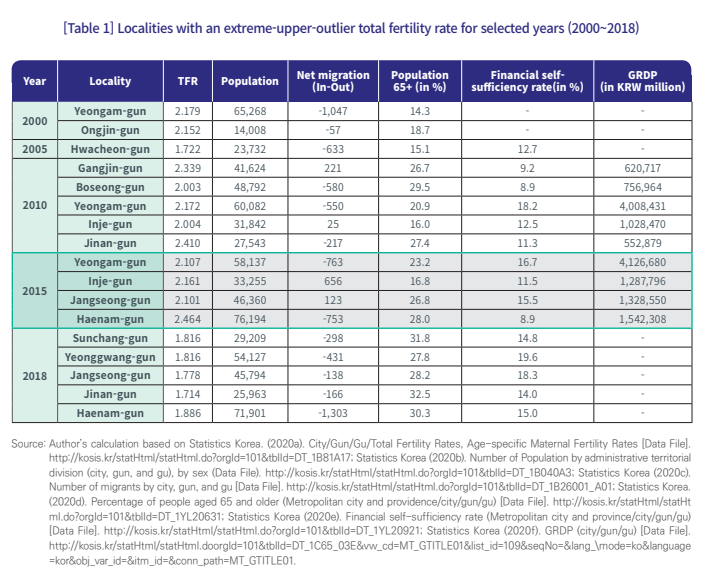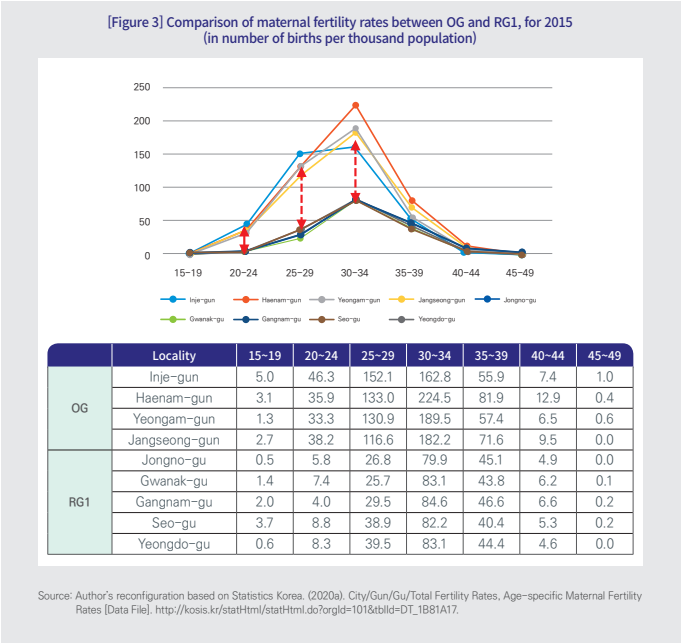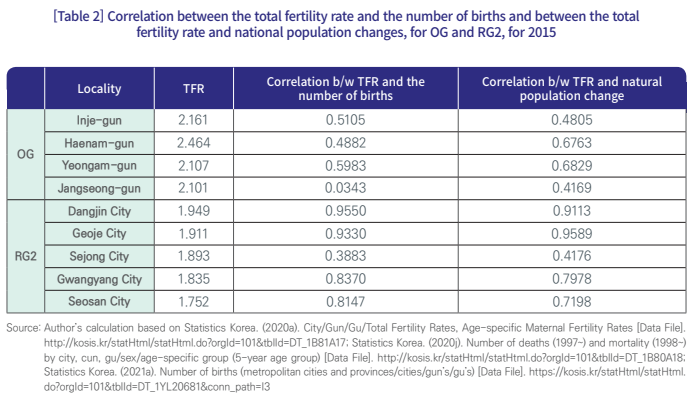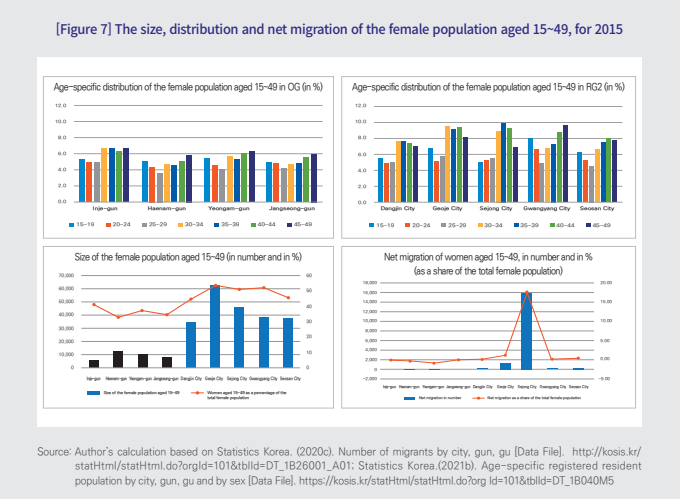Press Release
High Total Fertility Rates in Some Counties Have Not Led to High Birth Numbers or Population Increase
- Date 2021-08-04
- Hits 745
KIHASA published Issue & Focus, No. 405, “On the Total Fertility Rate as an Indicator of Local Population Changes,” which was also published as Research in Brief, Vol. 80.
“This study compares the population characteristics of localities with high total fertility rates and of those with low total fertility rates and, with evidence, analyzes why high fertility rates in many localities in Korea do not lead to high birth numbers or to a population increase,” said Chang Insu, associate research fellow at the Center for Population Impact Assessment, KIHASA, adding, “Though local total fertility rates have been used widely as indicators that have closely to do with natural population changes and as outcome indicators of local-level population policies, there is a need to further consider whether it is valid to use local total fertility rates in the way they have been used.”
Main Contents
|
■Characteristics of localities with high total fertility rates
The localities with an extreme-upper-outlier total fertility rate during the years observed from 2000 to 2018 were mostly non-urban counties (gun’s). Their population size, financial self-sufficiency rate, and gross domestic product (GRDP) all hovered below the national averages, with a negative net migration. The proportion of those aged 65 and older in the total population in these localities was higher than the national average or the average for non-urban counties. These are hardly characteristics that are deemed conducive to increasing local fertility rates.

■Comparison of localities with high total fertility rates to those with low total fertility rates
Comparison of age-specific maternal fertility rates
It was observed that maternal fertility differentials result in total fertility rate differentials, in particular, in women in their twenties and early thirties.

■Correlation between total fertility rate and the number of births and between total fertility rate and national population changes
The high total fertility rates found in non-urban counties are not strongly correlated with the number of births or with natural population increase. They are ascribable rather to the fact that these counties overall have a small female population aged 15-49 and to the characteristics found of the age-specific distribution of the female population in such localities. Limited though its findings are to only selected localities in the country, this study is meaningful in that it is an attempt to look in a concrete way into local-level total fertility rates in terms of their correlations with the number of births, natural population changes, and the size and migration of the female population aged 15-49.


■Concluding remarks
This study examined why the total fertility rate is much higher in some localities than in others and, by means of looking at its correlations with the number of births, natural population changes (increase and decrease), and the size and distribution of the female population aged 15-49, discussed what implications it has as an indicator.
The characteristics of localities with high total fertility rates as examined in this study lacked longitudinal observation as they are limited to the baseline year of 2015. Still, it was readily identifiable that the non-urban counties observed in this study have of late seen high fertility rates. This study found that these localities had high numbers of second- and higher-order births and high marital fertility rates in women aged 20-34.
The question of how these characteristics can hold up as they do over a certain period of time needs to be taken up in depth in some other research attempts in the future.
This study points to the need to further examine the utility of the local total fertility rate as an indicator of population policy outcomes and to consider various population processes. It is important first to have the understanding that, due to the population processes that occur in varying ways in and across localities, local total fertility rates differ conceptually from the national total fertility rate.

